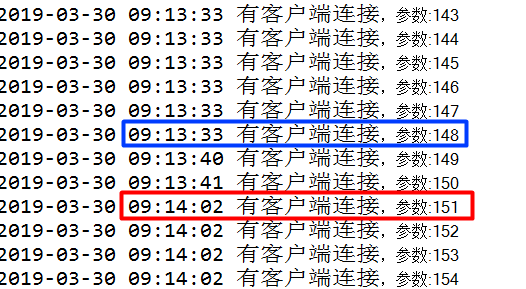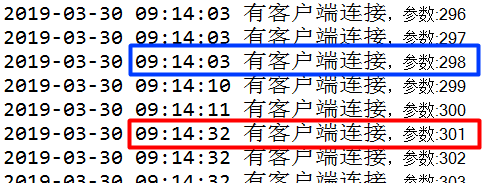这里的并不是真正的并发请求,因为for循环是间隔10毫秒,并且线程初始化也需要时间的,到真正执行http请求的时刻是不确定的。
tomcat 的运行状态可以在webapps下的manage项目查看,可以看到tomcat的运行模式,当前线程总数,占用内存大小等。
1 tomcat版本

2 tomcat配置文件server.xml设置

3 各参数的含义
acceptCount 等待队列的长度 , maxConnections 最大连接的长度,maxThreads 可以使用的最大线程数量
4 tomcat7运行模式
默认是BIO模式

5 服务端接收请求的方法
@RequestMapping(value = { "/testHttp" })
public void testHttpConcurrentRequest(HttpServletRequest req,HttpServletResponse resp){
String current = DateTimeFormatter.ofPattern("yyyy-MM-dd hh:mm:ss").format(LocalDateTime.now());
System.out.println(current + " 有客户端连接,参数:"+req.getParameter("name"));
try {
//保持连接
Thread.sleep(30*1000);
} catch (InterruptedException e) {
// TODO Auto-generated catch block
e.printStackTrace();
}
out("server response:"+req.getParameter("name"), resp);
}
6 客户端发送多线程请求
public class HttpClient { public final static ExecutorService cachedThreadPool = Executors.newCachedThreadPool(); public static void main(String[] args) throws Exception { HttpUtils helper = new HttpUtils(); for (int i = 0; i < 800; i++) { //根据测试不同更改数量 ExcuteHttpRequest ehr = new ExcuteHttpRequest(i + 1, helper); cachedThreadPool.execute(ehr); Thread.sleep(10); } Thread.sleep(600 * 1000); } } class ExcuteHttpRequest implements Runnable { private int clid; private HttpUtils helper; public ExcuteHttpRequest(int clid, HttpUtils helper) { this.clid = clid; this.helper = helper; } @Override public void run() { String current = DateTimeFormatter.ofPattern("yyyy-MM-dd hh:mm:ss").format(LocalDateTime.now()); System.out.println(current + " " + this.clid + "开始连接.."); try { String responseText = this.helper.sendGet("http://127.0.0.1:25080/abc/testHttp?name="+ this.clid); System.out.println(current + " " + this.clid + "接受到的数据:" + responseText); } catch (Exception e) { // TODO Auto-generated catch block System.out.println(current + " " + this.clid +"连接出错:"+e.getMessage()); } } }
7测试结果

由于在服务端里设置了线程sleep30秒,而且maxConnections为200,acceptCount为100,所以在服务端接收了400个请求后,就拒接接收请求了。



由于maxThread为150,服务端同时能处理的请求是由maxThread决定的。所以在13分33秒时,正在处理请求是150个,每个请求是30秒完成,所以等到14分02秒时,又可以处理接下来的150个请求了,再等30秒处理最后的100个请求。


从客户端收到的返回值可以看出,只要请求发送到服务端了,在不超时的情况下就可以收到响应,由于服务端共接收到了400个请求,所以客户端接收到了400个响应。
转载自:https://blog.csdn.net/kaka20099527/article/details/53285348/